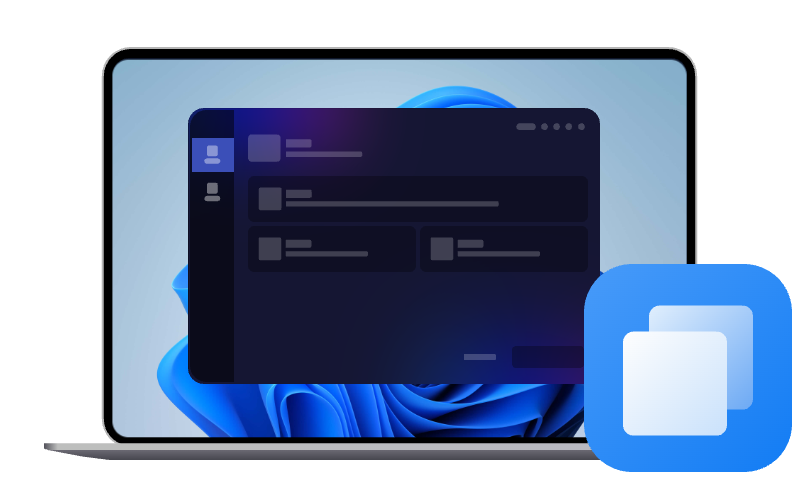Windows Cannot Install Required Files – Full Fix Guide
Get stuck on the “Windows cannot install required files” error? Learn how to fix error codes 0x8007025D and 0x80070570 with effective solutions here.
Common Causes of the “Windows Cannot Install Required Files” Error
The “Windows cannot install required files” error often appears during system installation or upgrade, leaving users stuck midway through setup. This issue can happen for several reasons:
- Corrupted or Incomplete Installation Media
If the Windows ISO file or installation media (USB/DVD) is damaged or incomplete, the setup can’t access essential files, leading to the error.
- Bad Sectors or Errors on the Target Drive
If you’re installing Windows on a hard drive or SSD that has bad sectors, the setup can fail to write files properly. This is especially common on older drives or drives with existing disk errors.
- Memory (RAM) Issues
Defective RAM or incorrect memory configurations can also trigger the error.
- Incorrect BIOS or UEFI Settings
Improper BIOS configurations—such as mismatched UEFI/Legacy modes or overclocking—can interfere with file loading and storage detection during setup.
- Multiple External Devices Connected
Peripherals like external hard drives, printers, or memory card readers can confuse the installer, leading to the error.
This article will focus on the error codes 0x8007025D and 0x80070570 and provide detailed troubleshooting steps. Please read on.
If you need a quick way to install Windows on a new drive, try this powerful cloning software.
Part 1: Windows Cannot Install Required Files 0x8007025D
If you are encountering the “Windows cannot install required files” Windows 10 0x8007025D error, try the following solutions.
Fix 1: Unplug Unnecessary External Devices
When too many devices are connected to your computer, Windows Setup may misread input/output (I/O) channels or run into driver conflicts. Here’s how to fix it:
1. Disconnect all external devices such as:
- USB flash drives (except the one for installation)
- External hard drives
- Printers, cameras, or card readers
- Bluetooth dongles or Wi-Fi adapters
2. Leave only keyboard, mouse, and the installation USB/DVD connected.
3. Restart your PC and try reinstalling Windows again.
Fix 2: Check and Reseat Your RAM
Bad or unstable RAM modules can also cause the 0x8007025D error since the installer temporarily stores setup files in memory. Follow the steps below to fix potential memory issues:
1. Power off your computer completely.
2. Open the case and remove your RAM sticks carefully.
3. Clean the contacts using a soft cloth or compressed air.
4. Reseat one RAM stick at a time, ensuring it clicks firmly into place.
5. Boot your computer with only one memory module inserted and attempt the installation again.
6. If it fails, swap the stick or use another slot to isolate the faulty module.
💡 Note: You can also run Windows Memory Diagnostic or MemTest86 to confirm if your RAM is defective.
Fix 3: Format Target Drive Before Installation
If your target drive contains corrupted partitions or leftover data from a previous OS, Windows may fail to write installation files correctly. Formatting the drive can fix the issue.
1. Boot your PC from the Windows installation USB or DVD.
2. When you reach the “Where do you want to install Windows?” screen, select your target drive.
3. Click “Format” (or choose “Delete” to remove all partitions and create a new one).
4. Proceed with the installation.
Part 2: Windows Cannot Install Required Files 0x80070570
If you get stuck on the “Windows cannot install required files” Windows 10 0x80070570 error, you can turn to the following solutions.
Fix 1: Recreate the Installation Media
Even a single missing or damaged file can prevent Windows from completing the setup. Recreating the installation media ensures you’re working with a clean, verified copy of Windows.
1. On another working computer, visit the Microsoft Software Download page.
2. Download the Windows Media Creation Tool for your version (Windows 10 or 11).
3. Use the tool to create a new bootable USB drive with the latest Windows ISO file.
4. Once finished, safely eject the USB and use it to reinstall Windows.
💡 Tip: Avoid third-party ISO files and cheap USB drives. Always use a reliable, 8GB+ USB flash drive and a stable internet connection during creation.
Fix 2: Run CHKDSK on Target Drive
If the drive you’re installing Windows onto has bad sectors or file system errors, the setup may fail to copy files properly — triggering the 0x80070570 error. You may run CHKDSK as follows:
1. Boot your computer using the Windows installation USB.
2. When you reach the setup screen, press Shift + F10 to open Command Prompt.
3. Type chkdsk C: /r /f and press Enter. Replace C: with the drive letter where you plan to install Windows.
4. Wait for CHKDSK to scan and repair any disk errors. Close Command Prompt and restart the installation.
💡 Note: If CHKDSK reports unrepairable errors, your drive may be failing. In that case, consider replacing it before proceeding with installation.
Fix 3: Reset BIOS Settings to Default
Resetting BIOS to its default values helps eliminate hardware miscommunication during setup. Here’s how to do it:
1. Restart your computer and press the setup key (usually Del, F2, or F10) during startup.
2. Once in the BIOS menu, look for an option like“Load Setup Defaults,” “Load Optimized Defaults,” or “Restore Factory Settings.”
3. Press F10 to save your changes and exit BIOS. Reboot your computer and try installing Windows again.
Bonus: Quick Way to Install Windows on New Drive
If you’re tired of installation errors like “Windows cannot install required files” or just want a faster, hassle-free way to set up Windows on a new drive, system cloning is your best shortcut. Instead of reinstalling Windows from scratch, you can clone your existing system — including all files, apps, and settings — directly to your new SSD or HDD. The best cloning software AOMEI Cloner comes to help.

- System Clone: Move your operating system, settings, and installed programs directly to another drive — no need to reinstall Windows or applications.
- Disk Clone: Create an exact copy of your entire disk, ideal for upgrading from HDD to SSD.
- Intelligent Clone: Copy only used sectors, allowing you to clone larger disks to smaller SSDs efficiently.
- SSD Alignment: Enable 4K alignment to improve read/write speed and extend the SSD’s lifespan.
- Bootable Clone: All cloned system drives are automatically made bootable. No extra setup or recovery needed.
Download AOMEI Cloner and follow the steps below to migrate Windows safely and quickly:
Step 1. Connect your new SSD or HDD to the PC.
Step 2. Install and launch AOMEI Cloner. Then click Clone > System Clone.
Step 3. Boot-related partitions are selected automatically as the source. Choose your new drive as the destination.
Step 4. Enable SSD Alignment (if you’re cloning to an SSD) for optimal performance. Click Start Clone to begin copying OS.
Once the cloning process completes, simply replace your old drive with the new one or change the boot order in BIOS — and you’ll boot directly into your familiar Windows environment without reinstalling anything.
Verdict
The “Windows cannot install required files” error — often accompanied by codes 0x8007025D or 0x80070570 — can quickly turn a simple Windows installation into a frustrating experience. Luckily, with the solutions offered in this article, you can fix this installation error easily.
As a smarter workaround, you can clone your current Windows system to a new drive with a powerful tool AOMEI Cloner. It enables you to migrate Windows without reinstalling or losing data. Download it now to try it out!

